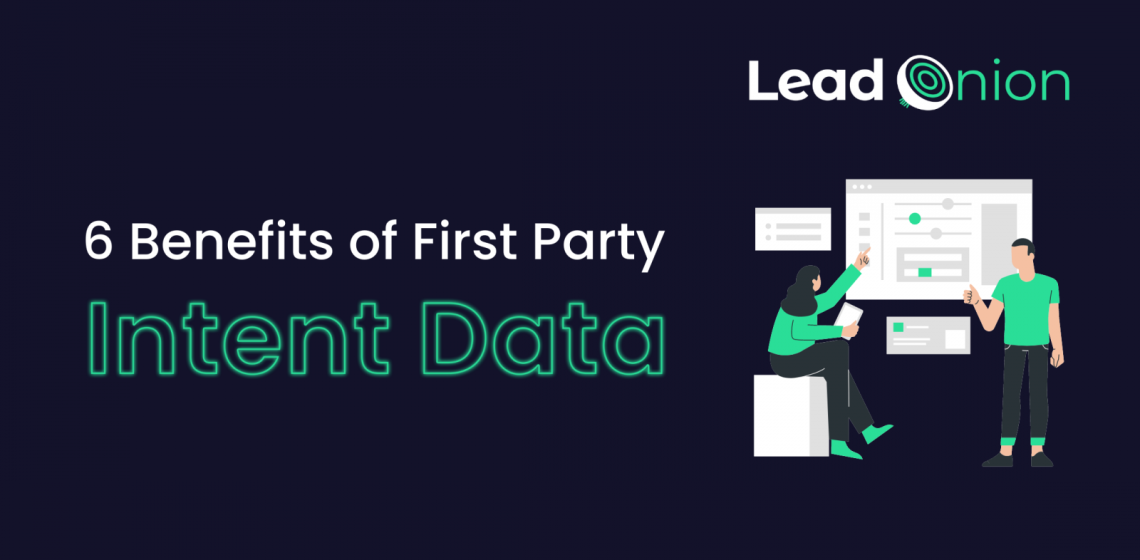Benefits Of First Party Intent Data
Most of today’s businesses are collecting some form of data on their customers and prospects. The key differentiator between most businesses and smart businesses are those that maximize and leverage the data they are collecting, putting it to use to help inform intelligent lead capture strategies. Here are 6 of the benefits of using first party intent data to inform your sales and marketing strategies.
1. Tried and Tested
The concept of data-driven marketing is not new. Traditional marketing strategies were also based on data, but the advent of digital marketing and the vast amount of data and buyer intent signals that can be captured and analyzed has allowed marketing and sales professionals to highly and accurately target prospects much more effectively based on their online and offline behaviors and actions.
2. Data Protection and Security
The increasing concern for data protection and privacy and the subsequent introduction of tighter regulation and control, as well as public unease around how personal data is being handled by third parties, means more and more businesses are adopting sales and marketing strategies based on first party data.
You are the Data Controller for your own data processing, which includes collection, storage, analysis, and retention of data. Therefore, you are not reliant on third parties for ensuring compliance with data protection regulations, such as the General Data Protection Regulation and the Data Protection Act.
While a comprehensive data collection and analysis strategy, using all three pillars of data (first, second, and third-party) is irrefutably the most effective for creating enriched customer personas and profiles, it is envisioned that further data regulations and restrictions will come into force, such as the elimination of third-party cookies by 2022 (Emarsys). Therefore, businesses adopting strategies that use company-owned first-party data assets are in some ways ensuring their marketing and sales efforts are future-proofed.
3. Cost-Effective
The majority of first party buyer intent data is already easily accessible to your business, and will incur little to no additional cost to maximise its potential. All you have to do is start using it properly. A few minor tweaks may be required to how the data is being collected, analysed, and reported to make it as useful as possible, and cross-referencing data points by combining your data with buyer intent algorithms will certainly add richness, depth, and insight to your understanding of your buyer journeys.
4. Competitive Advantage
Unlike other data sources, your first party buyer intent data is available only to you. The insights, knowledge, and advantage that your data provides to your marketing and sales teams, and to your business, is unique and is not available to your competitors. This provides your business with a unique opportunity to maximise on its competitive advantage and put the data to work for your business.
5. Relevant and Accurate
Nielsen reports that 86% of marketers recognise first party data as the lifeblood of their marketing efforts.
As first party data comes directly from your customers and prospects, in real time, it is relevant, accurate, and precise. Minimising the distance between the data source and your business reduces the potential for error and ensures your teams are working with the most up to date information available to them. Data analysis is directly within your control, and even more importantly, the effects of any new strategies or tactics your team implements can be monitored effectively, in real time, to review the results.
6. Increased Personalisation
Reliable and accurate data is essential for creating precise customer personas. By using your own first party buyer intent data, you gain valuable and unique insights into the needs and preferences of your customers and prospects, which you can use to create much more personalised buyer journeys.
This improves the buyer experience, reduces unnecessary noise, increases conversion rates while reducing conversion lead times, and improves your retargeting efforts, which overall helps you to reduce costs, increase efficiencies, and boost sales.
Effective analysis of first party behavioural data provides a clearer understanding of what your prospects and customers are looking for, and what type of content they are more likely to consume.
It is the key to creating personalised and precise marketing and sales communications that have a higher likelihood of converting your prospects into customers and helping you predict future trends much more accurately.
“Companies that are no longer able to personalize their outreach to customers at scale may have to spend around 10 to 20 percent more on marketing and sales to achieve their current level of returns.” McKinsey and Co.
Your target customers are already talking to your competitors.
Sign up for a demo and we’ll show you leads who engaged with your competitors in the last 24 hours.

